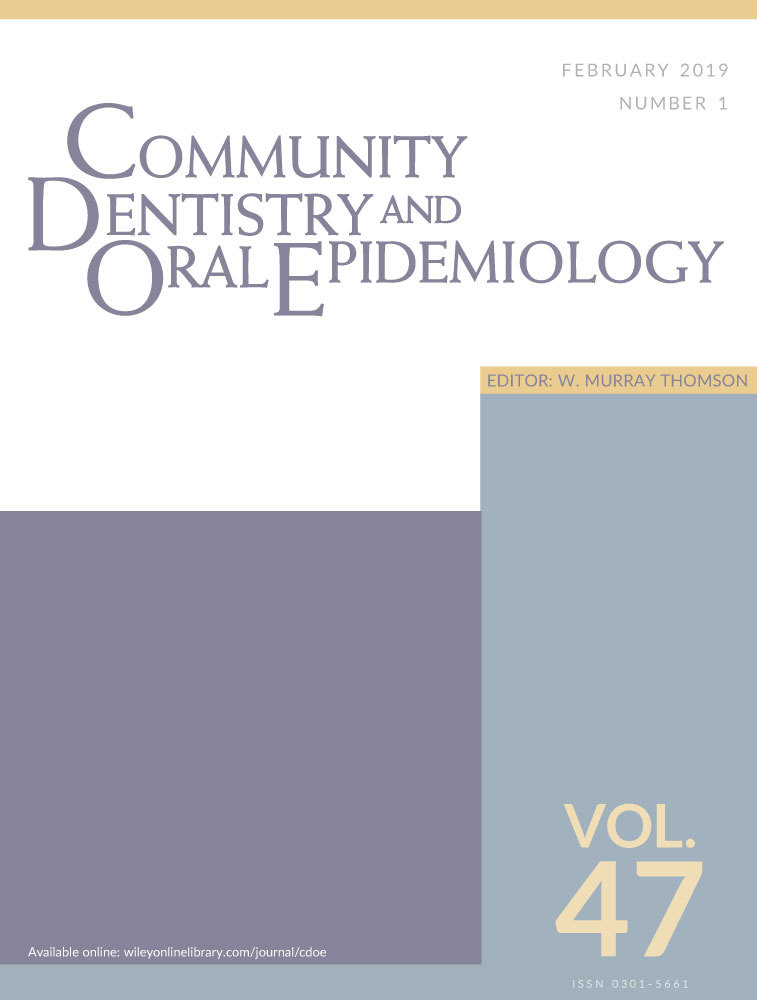Responsiveness to change of the Malay-ECOHIS following treatment of early childhood caries under general anaesthesia
Abstract
Objectives
To evaluate the sensitivity and responsiveness of the Malay version of Early Childhood Oral Health Impact Scale (Malay-ECOHIS) to dental treatment of early childhood caries (ECC) under general anaesthesia (GA) and determine the minimally important difference (MID) for the Malay-ECOHIS.
Methods
A sample of 158 preschool children with ECC awaiting dental treatment under GA was recruited over an 8-month period. Parents self-completed the Malay-ECOHIS before and 4 weeks after their child's dental treatment. At 4 weeks follow-up, parents also responded to a global health transition judgement item. Data were analysed using independent and paired samples t tests, ANOVA and Pearson correlation coefficients.
Results
The response rate was 87.3%. The final sample comprised 76 male (55.1%) and 62 female (44.9%) preschool children with mean age of 4.5 (SD = 1.0) years. Following treatment, there were significant reductions in mean scores for total Malay-ECOHIS, child impact section (CIS), family impact section (FIS) and all domains, respectively (P < 0.001). The effect size (ES) for the Malay-ECOHIS was +1.0; across the domains, it ranged from +0.4 to +1.9. There was a weak, positive correlation for Malay-ECOHIS change scores (r = 0.165) and CIS change scores (r = 0.175) with the number of decayed teeth (dt), respectively. Similar correlation was also observed between Malay-ECOHIS change scores and the number of extracted teeth (r = 0.129). Based on the global health transition judgement, 62.3% of parents reported their child's oral condition to be “a little improved” while 37.7% reported it to be “much improved” following treatment, with Malay-ECOHIS mean change scores of 6.7 (ES = +1.1) and 9.6 (ES = +1.2), respectively. There was an observed gradient in the Malay-ECOHIS change scores and ES in relation to parents’ perception of their child's oral health improvement after treatment, supporting the responsiveness of the measure. The Malay-ECOHIS MID was found to be 7 scale points.
Conclusion
The Malay-ECOHIS is empirically shown to be sensitive and responsiveness to dental treatment of ECC under GA.




